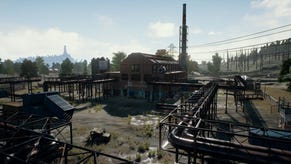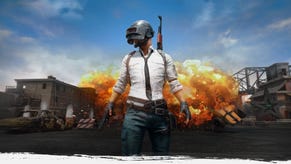PUBG's community discovers major problem with the game's gunplay
The more things change, the more they stay the same. It seems this is especially true for PlayerUnknown's Battlegrounds, which has once again come under fire from core players because of a very tricky, but nonetheless disruptive issue.
PUBG Corp. spent most of last year fixing PUBG, and the team has made large strides towards creating the more polished, consistent experience players have been clamouring for since the shooter first hit early access.
It's generally been smooth sailing for the better part of 2018, until recently. PUBG players have discovered that the in-game framerate directly affects weapon recoil, which means it controls damage per second (DPS), thus dictating weapon performance.
PUBG's weapon mechanics are generally considered among its greatest qualities; weapons have noticeable kick that ensures gun fights rely on skill in learning, and being able to control recoil. Weapon characteristics also form the basis for the choice of attachments, and the shared knowledge about each weapon's effective ranges.
All of that was thrown into question after a detailed analysis from WackyJacky101, a PUBG YouTuber known for testing the game's various aspects. WackyJacky101's findings are typically well-researched, and though he may not command a giant fan base, his opinions are very respected amongst players.
In the video, the YouTuber found that the lower the framerate, the lower a weapon's vertical recoil is going to be. 30fps, which is the lowest limit PUBG can run at, will result in much more manageable recoil for most weapons. This is most noticeable when using high rate-of-fire weapons, but not so much with the slow-firing like the AKM.
WackyJacky101 notes that framerate affects the rate-of-fire, so it follows that having a low fps will limit how fast your weapon can fire, thus making weapons like the M416 more accurate at low fps. He believes it's due to how PUBG calculates recoil, which happens for every single shot fired rather than following a set pattern.
Although high ROF weapons become more accurate at low framerates, their damage output as a result decreases. This obviously assumes you have good recoil control in framerates above 60, but the accuracy buff does benefit players who have trouble compensating for recoil under normal circumstances.
More importantly, players with a fluctuating framerate will get wildly different behaviour, which makes it harder to gauge the recoil.
Typically, that would be the end of it, but clever Reddit user MutuTutu did more digging, and found that the issue goes deeper. According to their findings, it all comes down to how many times each weapon fires a shot per second.
For example, the AKM was least affected in WackyJacky101's tests because its fire rate (10/s) perfectly syncs up with 30 and 60 fps. Limiting the fps to 31 or 61 exposes that a single extra frame will alter the recoil. This goes for all weapons.
In other words, there's an "ideal" framerate for each weapon in PUBG, based on their rate-of-fire.
MutuTutu even went ahead and ran the numbers for all weapons, resulting in a long spreadsheet categorising every weapon's performance at various framerates.
The more your framerate is in sync with your weapon's rate-of-fire, the better results you're going to have. Obviously, it's impossible to maintain a set of different, locked framerates to go along with each pick, but the idea here is that you want to avoid a fluctuating fps as much as possible.
For many players, however, this is simply not an option. PUBG's framerate is typically hit the hardest early in the round, when the majority of players are still alive. But drops that happen when entering - or even looking at - big cities in the game can be unavoidable.










